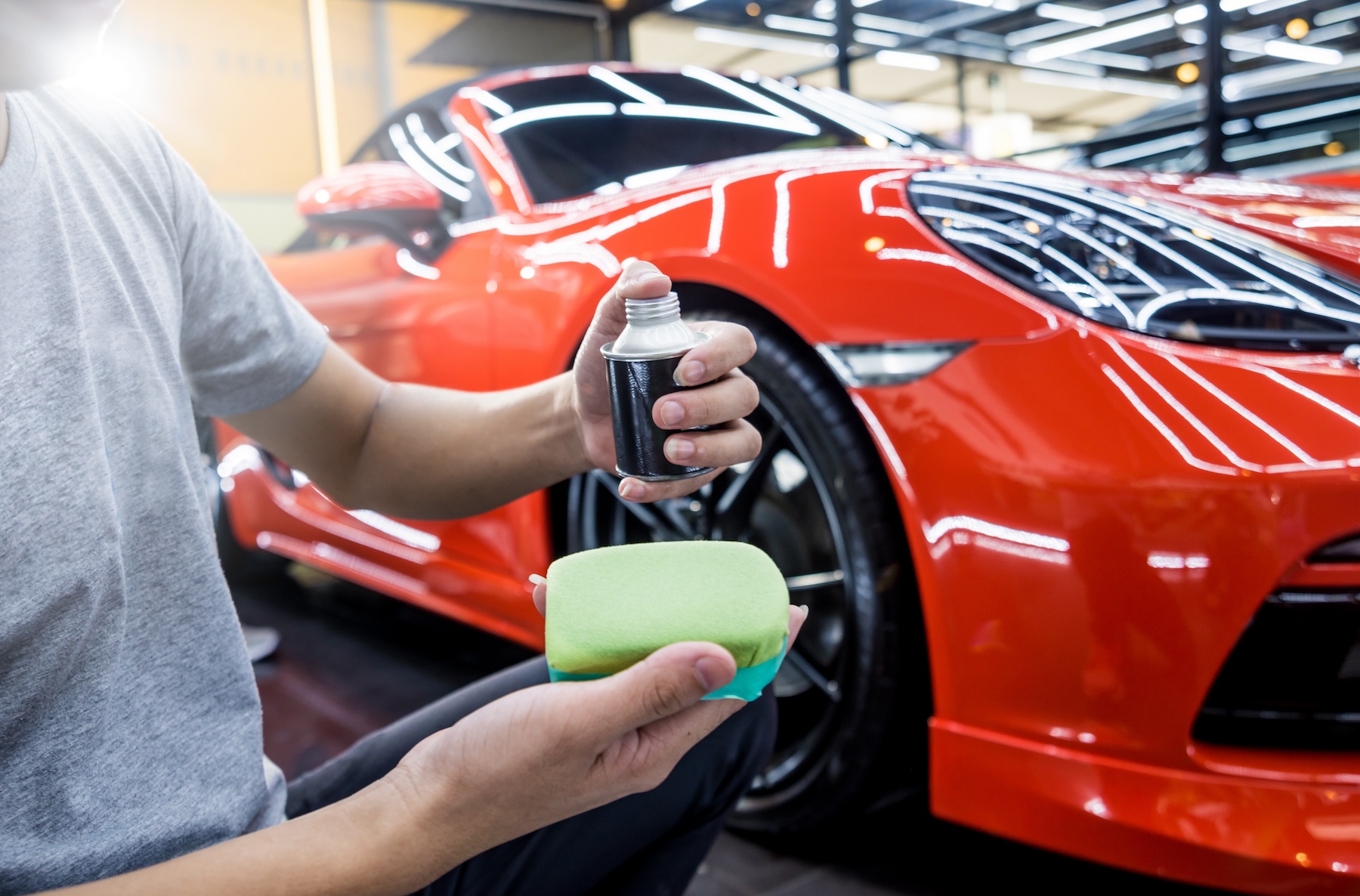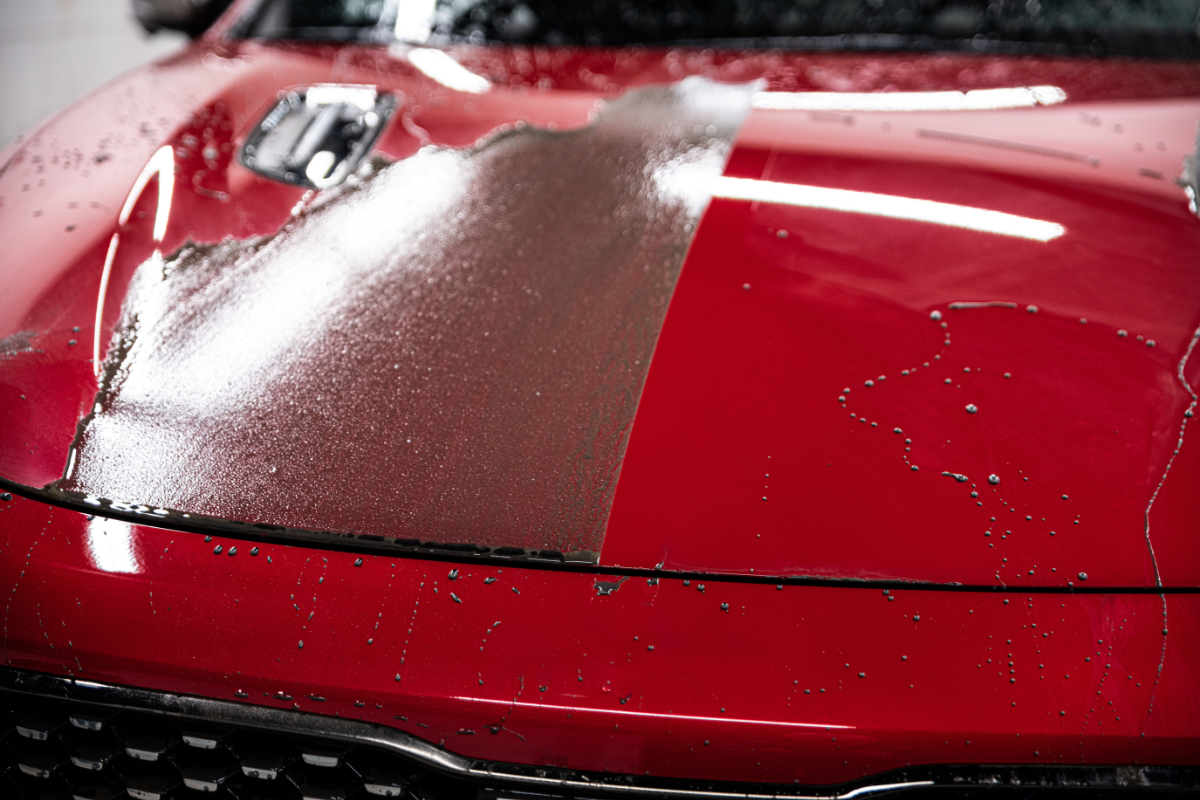Discover Ceramic Pro: Advanced Finish Solutions for Your Auto
Discover Ceramic Pro: Advanced Finish Solutions for Your Auto
Blog Article
The Scientific Research Behind Ceramic Layer: Just How It Boosts Your Vehicle's Aesthetic and Toughness

Recognizing Ceramic Finish Chemistry
The chemical composition of ceramic coatings plays a crucial duty in identifying their longevity and safety residential properties on car surface areas. Ceramic coverings are generally composed of silicon dioxide (SiO2), which is a primary element supplying firmness and warmth resistance. Various other components such as titanium dioxide, silicon carbide, and polysilazanes are typically contributed to enhance certain residential or commercial properties like UV adhesion, resistance, and hydrophobicity.
Silicon carbide is understood for its abrasion resistance, making the ceramic layer challenging and long lasting versus physical damage. Polysilazanes are utilized to boost the finish's flexibility and attachment to the automobile's surface, guaranteeing lasting defense. Comprehending the chemistry behind ceramic coverings is essential for both applicators and lorry owners to value the value and benefits these finishings offer in keeping the aesthetic appeal and long life of lorries.
Enhanced Gloss and Mirror-like Complete
Recognizing the chemical composition of ceramic finishes not just discloses their safety homes but additionally drops light on how they contribute to attaining an improved gloss and mirror-like finish on car surfaces. The secret to the shiny effect depends on the nano-ceramic particles present in the finish. These fragments fill out microscopic pores and flaws externally, producing a smooth and level surface. As light hits the covered surface, it mirrors evenly, giving the appearance of a deep, glossy shine. In addition, the chemical framework of ceramic finishes permits them to develop a strong bond with the car's paintwork, stopping oxidation and keeping the quality of the finish in time. This bond likewise withstands ecological pollutants, such as dirt and crud, that can dull the sparkle of the car. The mix of filling buildings, light reflection, and long-lasting defense makes ceramic coatings a popular option for those seeking a vivid and mirror-like surface for their automobiles.

Impact on Paint Defense and Longevity
Ceramic coatings for automobiles considerably enhance the durability and defense of the paintwork. By developing a chemically resistant layer in addition to the car's clear layer, ceramic finishings work as a barrier versus various ecological contaminants that can harm the paint over time. These layers are created to ward off dirt, water, roadway salt, bird droppings, and other harmful compounds, decreasing the risk of paint oxidation and deterioration. Additionally, the hardness of ceramic finishes gives a level of scrape resistance, assisting to preserve the lorry's appearance for an extended period.
In terms of durability, ceramic coatings provide a resilient option contrasted to typical waxes or sealers. On the whole, the protective residential properties of ceramic layers contribute considerably to protecting the automobile's paintwork and boosting its visual allure over an extensive duration.
Resistance to Impurities and Rough Elements
With the protective shield given by ceramic layers against various ecological impurities and elements, cars have the ability to keep their immaculate appearance in imp source spite of direct exposure to extreme conditions. Ceramic coverings create a strong obstacle that wards off water, dust, dirt, and other typical pollutants, avoiding them from bonding he said to the vehicle's surface. This hydrophobic nature not only makes cleansing easier however also minimizes the threat of water areas and etching triggered by acidic impurities. Furthermore, the chemical resistance of ceramic finishings helps protect the paint from bird droppings, insect splatter, tree sap, and other destructive substances that can harm the finish with time.
In addition, ceramic finishes use UV protection, shielding the car's paint from the sun's damaging rays that can cause fading and oxidation. This resistance to UV damages helps keep the color strength and sparkle of the paint for longer durations. By developing a long-lasting and resilient barrier, ceramic coverings guarantee that the automobile's exterior continues to be safeguarded against a large range of contaminants and severe elements, maintaining its visual allure and durability.
Application Methods and Maintenance Tips
For optimum outcomes when using ceramic finishings to lorries, using correct techniques and adhering to recommended upkeep methods are vital. The application process of ceramic layer calls for attention to detail and precision. Prior to using the ceramic layer, it is important to extensively clean and sanitize the car's surface to make sure proper attachment. This includes cleaning, claying, and potentially polishing the paint to develop a smooth canvas for the ceramic layer to bond properly.
When using the ceramic finishing, it is suggested to operate in little areas to guarantee also protection and to avoid the product from drying out also promptly. Utilizing applicator pads or microfiber fabrics, use the layer in a crisscross or up-and-down activity, relying on the item's directions. After the finishing is applied, enable it to heal for the specified time prior to rubbing off any deposit.
In terms of maintenance, normal cleaning with pH-neutral soaps and avoiding rough tools or extreme chemicals will certainly assist protect the ceramic coating's stability. Routine assessments for any kind of damage or use on the coating can likewise aid maintain its safety homes in time.

Final Thought
Finally, ceramic finish enhances a lorry's aesthetic charm and toughness with its chemical structure, offering a glossy surface and protecting visit the site the paint from environmental impurities. Its resistance to severe components and ease of maintenance make it a preferred option for auto owners aiming to preserve the look of their lorries. In general, ceramic layer is a clinically backed solution for preserving the look and durability of your vehicle.
Recognizing the chemistry behind ceramic layers is critical for both applicators and car owners to value the value and advantages these coverings offer in keeping the visual appeal and long life of vehicles. (ceramic pro)
Recognizing the chemical structure of ceramic coatings not just discloses their safety residential properties however also loses light on just how they contribute to achieving an improved gloss and mirror-like coating on lorry surface areas. By forming a chemically immune layer on top of the automobile's clear layer, ceramic coatings act as a barrier against various environmental impurities that can harm the paint over time. In general, the protective homes of ceramic finishes add dramatically to maintaining the vehicle's paintwork and enhancing its aesthetic charm over a prolonged duration.
In final thought, ceramic covering enhances an automobile's visual charm and resilience with its chemical make-up, giving a glossy coating and protecting the paint from environmental impurities.
Report this page